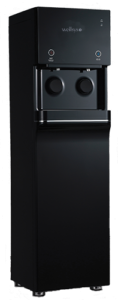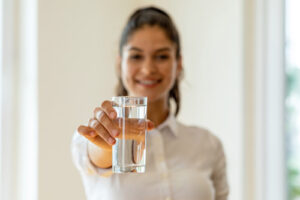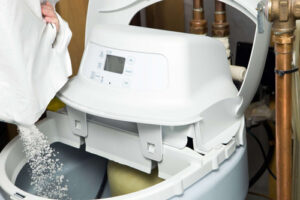Water in Washington DC comes from the Potomac River. It is treated by DC Water at the Washington Aqueduct to provide clean water to the residents and employees of the area. While the water company makes every effort to remove lead before it leaves the plant, older pipes installed in the 1950s-1970s contain lead that may leach into water before it reaches your Washington DC office or home. The lead pipes installed decades ago still cause problems with lead in DC water today.
How much lead is safe to drink? The Environmental Protection Agency (EPA), an independent agency of the U.S. government, states that 10ppb (parts per billion) is acceptable. The opinion of many health and safety experts, including the Environmental Work Group (EWG) believe that no level of lead is safe in your drinking water. Problems caused by lead in water include developmental and behavioral problems in children and even cancer.
DC Water offers a free lead test kit if you suspect lead in your water, but it’s best to trust a professional like the certified water testing specialists at Hague Quality Water of Maryland to conduct the most accurate results.
Levels of Lead in DC Water
Based on the most recent water quality report in 2018 by DC Water, the DC drinking water tested in a range from 0-118 ppb for lead. Remember, the EPA limit is 10ppb, but the treatment facility has stated the goal is a measured level of 0ppb. DC Water cites the corrosion of household plumbing systems and erosion or natural deposits as sources for lead in drinking water. Lead is a real problem. In a recent news post about the annual temporary switch in disinfectants, the water company said they “will continue to add a corrosion control inhibitor during this temporary switch to prevent lead release.”
Even more, tests reporting elevated lead levels in federal government buildings, such as the Cannon House Office Building in Washington, DC, continue raising concerns. In fact, all drinking sources in the building were turned off in 2016. This cautionary act left employees wondering how to access drinking water at work.
Why Bottled Water Isn’t Better
Many in DC have turned to bottled water, either from home or office-provided, but this opens other areas of concern. Simply put, bottled water is not better. Here are a few of the potential problems:
- 5 gallon water dispensers need regular sanitization to maintain cleanliness
- Storage of extra bottles uses office space
- Purchasing the correct amount of water can be hard to predict
- Plastic can leach into water during the bottling process
- Cost is unpredictable making budgeting a challenge
Solutions for Lead in DC Water

An alternative solution used by many congressional offices and DC residents, is a bottleless water cooler. Bottleless water coolers can be equipped with filters certified for lead removal. They provide an on demand supply of hot and cold water without the need for storage or the risk of contaminants. A bottleless water cooler like those offered by Chesapeake Cooler Company are available for a flat monthly fee, including regular maintenance.
If you have access to treat your water at its point of entry, a whole house (or office) treatment system will remove contaminants. A comprehensive solution such as this provides reliably clean water for any connected tap or water-using appliance. The Hague WaterMax BEQ is a good solution for treating water at the point of entry. The water is filtered and available from any tap in the home or office, completely removing concerns of contamination from the water source.
If you have not tested your DC water for lead recently, it’s time to find out what is really in your water. The water experts at Hague Quality Water of Maryland can test your water. They will provide a no obligation assessment of the water treatment solution that best fits your water type, needs and budget.




